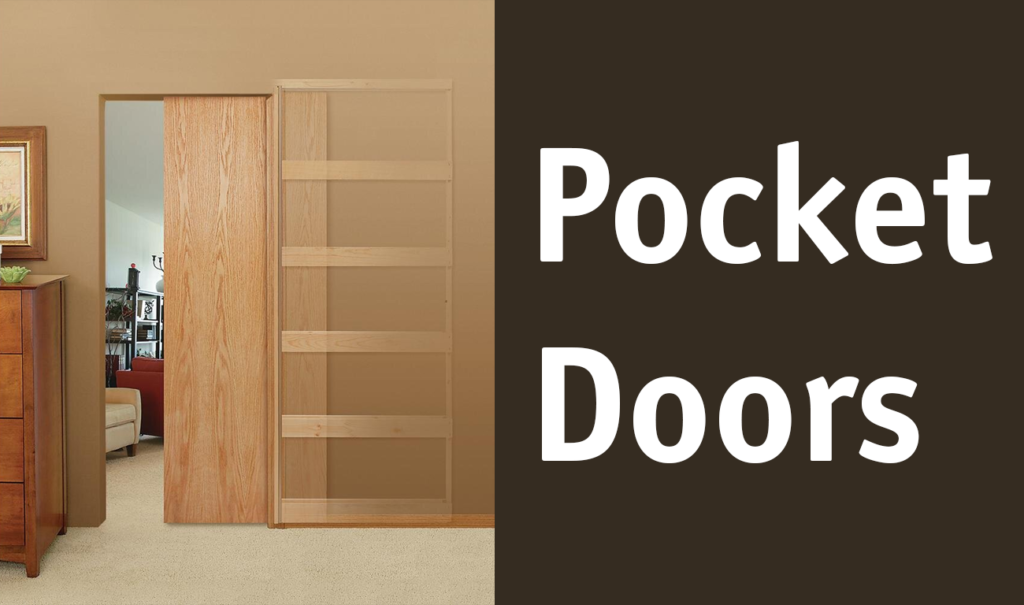When it comes to interior design, the choice of doors can greatly impact the functionality and aesthetics of your living space. Two popular options that provide space-saving solutions are pocket doors and sliding doors. While they may appear similar at first glance, there are key differences between these door types that make them suitable for different situations. In this blog, we’ll explore the characteristics, advantages, and considerations of pocket doors and sliding doors, helping you make an informed decision for your home.
Understanding Pocket Doors

Pocket doors are interior doors that slide into a recessed pocket within the wall when opened. They operate on a track system, allowing them to disappear from view and save space. They are ideal for maximizing floor space and seamlessly transitioning between rooms. These types of interior doors provide privacy when closed and can be used in various areas, such as bathrooms, closets, and utility rooms. They offer a sleek and modern alternative to traditional hinged doors.
Understanding Sliding Doors

Sliding doors are horizontal doors that move along a track when opened or closed. They consist of two or more panels that slide past each other, providing a convenient, space-saving solution. Unlike pocket doors, sliding ones remain visible even when open, serving as design elements or room dividers. They are versatile, customizable, and easy to install, making them popular for creating partitions, separating living spaces, or enclosing closets. Sliding doors add functionality and aesthetic appeal to homes while offering flexibility in room layout.
Choosing the Right Door for Your Home
To determine whether a pocket door or a sliding door is the better choice for your home, consider the following factors:
- Space: If you have limited space or want to optimize your room’s layout, a pocket door is an excellent option. It allows you to maximize available floor and wall space. On the other hand, if space is not a concern and you want to create a visual statement or a flexible partition, sliding doors can be a great fit.
- Aesthetics: Consider the overall design and style of your home. These types of interior doors provide a seamless and minimalist look since they vanish when opened, offering a sleek and unobtrusive appearance. Sliding doors, on the other hand, can serve as a design feature, with various frame and panel options available to match your interior décor.
- Functionality: Evaluate how you intend to use the doors. They are excellent for areas where privacy or noise reduction is essential, such as bedrooms or home offices. They provide a solid barrier when closed, effectively blocking sound and visual distractions. Their visible presence even when open, are more suitable for creating partial partitions or showcasing specific areas of your home.
Conclusion
Whether you opt for pocket or sliding doors, both offer unique advantages in terms of space-saving and design. The choice ultimately depends on your specific needs, available space, and desired aesthetic. Assess your requirements, consider the installation complexities, and visualize the impact of these types of interior doors on your living space. By doing so, you’ll be able to make an informed decision that enhances your home’s functionality and visual appeal.
